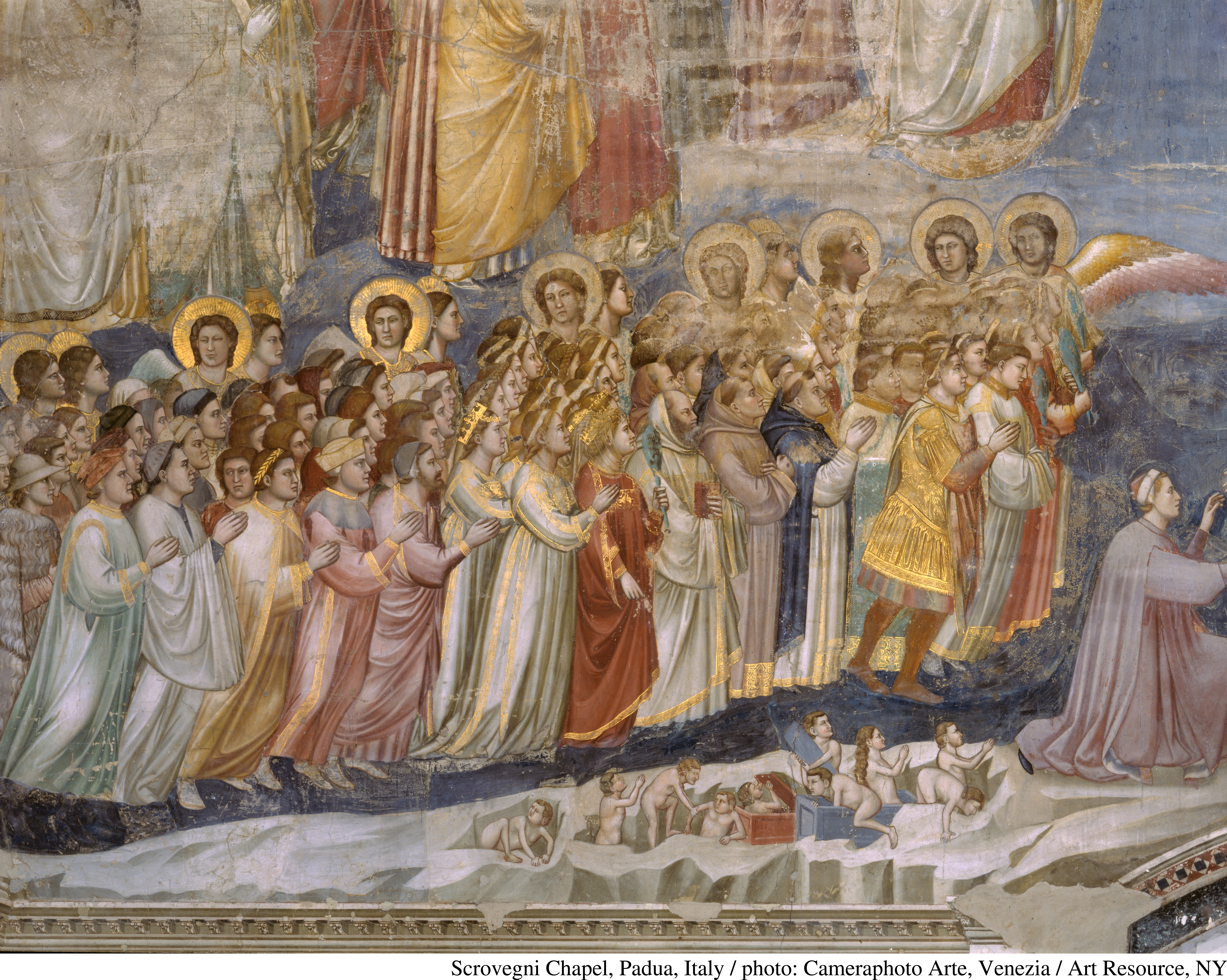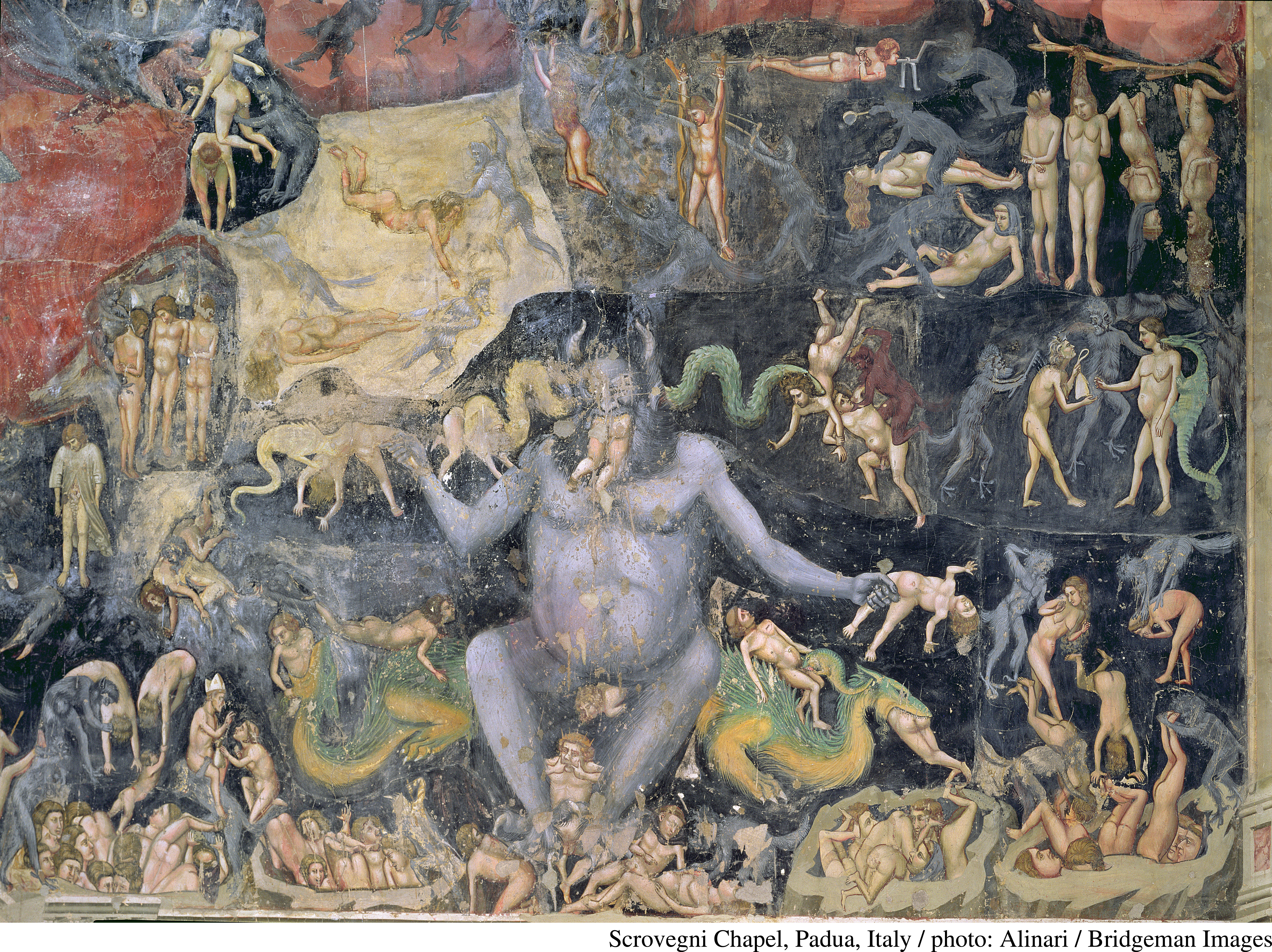Seeing History: The Agony and the Ecstasy
Printed Page 407
Important Events

The medieval synthesis included graphic depictions of The Last Judgment, contrasting the joys of Heaven with the pains of Hell. New interest in the natural human body led artists such as Giotto—who painted both the top and bottom scenes on this page on the west wall of the Scrovegni Chapel in Padua—to show human emotion as well. On the top image (but, in the full scene, at the right hand of God) are the blessed on their way to Paradise. Their emotions are not depicted in their faces (as artists tend to do today) but rather in their graceful and harmonious movements. Everyone’s right hand reaches out toward Christ, who hovers in glory above them. At the very bottom, little figures rise from the grave, also stretching out their arms to their heavenly destination.
On the bottom image (but the left-hand side of God) is the Devil, squeezing, devouring, and defecating the souls of the damned. Unlike the blessed, the bodies of the damned are distorted and angular, their movements uncoordinated and awkward. They look downward or to the side, not knowing where Christ is. Their very postures express their agony.
Question to Consider
What might be the reasons for putting an image of the Last Judgment on interior of the entryway of a private chapel, as Giotto did here?